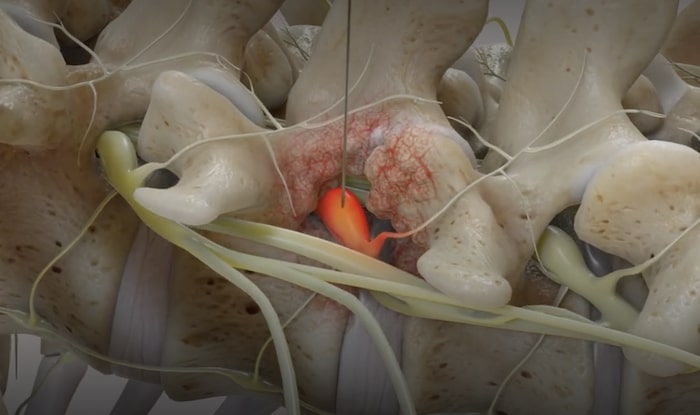
When it comes to relief from your pain, the only thing that works better than healing is a treatment that targets the nerves carrying pain messages. That’s what happens when experienced physicians perform a root block or nerve block.
Here’s what you need to know about these two treatments and which one may be right for you.
Root Blocks And Nerve Blocks Work The Same Way
Both treatments target nerves and share the same goal: to ease your pain. We accomplish that goal by precisely injecting a local anesthetic, with or without steroids, at the targeted nerve.
Steroids ease your pain by reducing nerve inflammation. The anesthetic stops nerve signals, “blocking” them from traveling through the nerve.
Blocking the nerve prevents your brain from getting the pain message. That means you can’t perceive (feel) the pain even though the source still exists.
The procedure we perform is also the same no matter which block you need. We numb the injection site, then use real-time X-ray or ultrasound imaging to see the nerves and guide the needle to the nerve.
Roots Blocks And Nerve Blocks Target Different Locations
The primary difference between a root block and a nerve block is the location:
Root Block Location
Nerve roots (the target of a root block) are located along your spine, where groups of nerves leave (and return to) the spinal cord. Every vertebra in your spine has openings on both sides that let groups of nerves go the spinal cord together.
The cluster of nerves outside the spinal cord is called the nerve root. These roots are the target of a root block.
After the nerves leave the root, they all go to the same general area in your body, branching out to reach different parts in that one area. Injecting an anesthetic into a nerve root stops pain signals from the entire area.
Nerve Block Location
A nerve block can target any nerve outside your spinal cord. We may do a nerve block to verify we targeted the right nerve, then perform another procedure like a radiofrequency ablation to give you long-lasting pain relief. Or a nerve block may be your primary treatment.
Conditions Treated By Root Blocks And Nerve Blocks
We use these two basic nerve blocks to prevent or significantly reduce pain from any part of your body and from nearly any type of injury or disease. The one that’s best for you depends on your diagnosis and the underlying cause of your pain.
These are just a few examples of the different types of blocks and the conditions they treat:
Lumbar Sympathetic Nerve Block
In this treatment, we target the sympathetic nerves along your spine. We may recommend a lumbar sympathetic nerve block to treat lower back and leg pain caused by numerous conditions, including peripheral neuropathy and complex regional pain syndrome (CRPS).
Medial Nerve Block
The medial nerve carries pain messages originating in the spinal joints (facet joints). This nerve block treats pain caused by facet joint arthritis.
Genicular Nerve Block
The genicular nerves tell your brain when you have knee pain. As a result, a genicular nerve block relieves pain arising from any problems in your knee, whether you sustain an injury or have arthritis.
Occipital nerve block
Since the occipital nerves go along the back of your scalp to the top of your head, this type of nerve block eases the pain of migraines and other headaches.
Intercostal Nerve Block
Intercostal nerves carry pain from your chest. This nerve block eases pain from any chest condition, including rib fractures, lung surgery, and shingles.
Selective Nerve Root Block
This injection targets the nerve roots carrying pain messages caused by spine conditions, such as herniated discs and sciatica.
Precision Pain Care and Rehabilitation has two convenient locations in Richmond Hill – Queens and New Hyde Park – Long Island. Call the Queens office at (718) 215-1888, or (516) 419-4480 for the Long Island office, to arrange an appointment with our Interventional Pain Management Specialist, Dr. Jeffrey Chacko.















